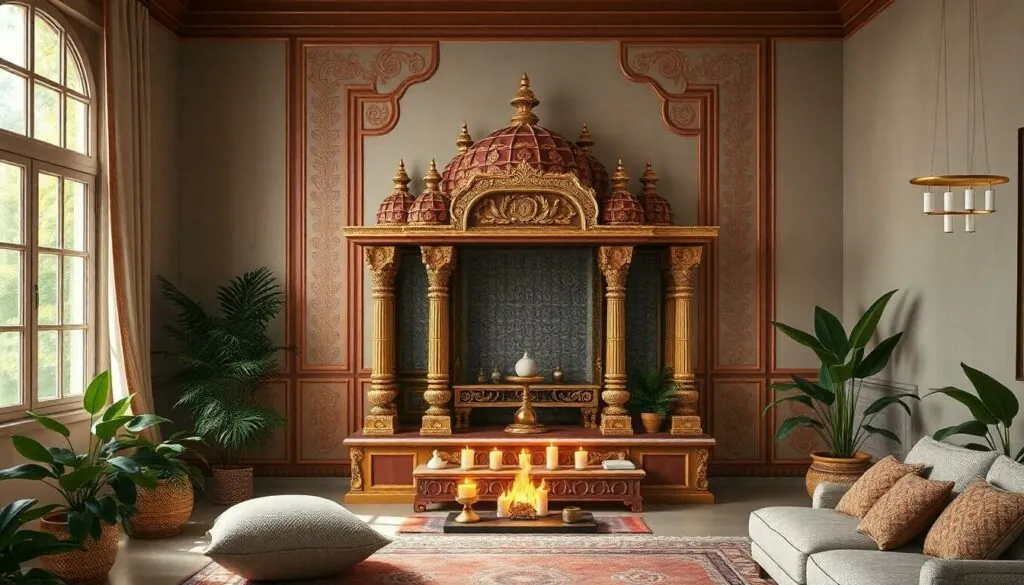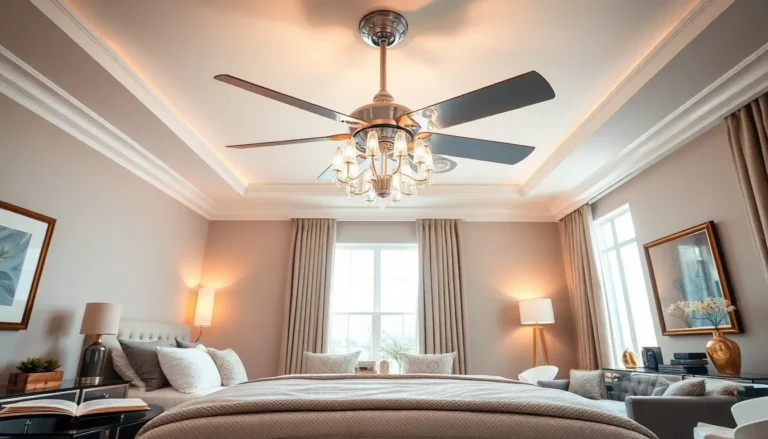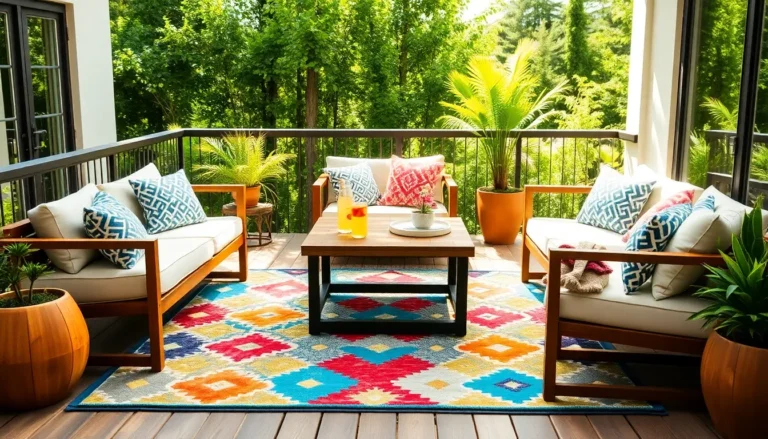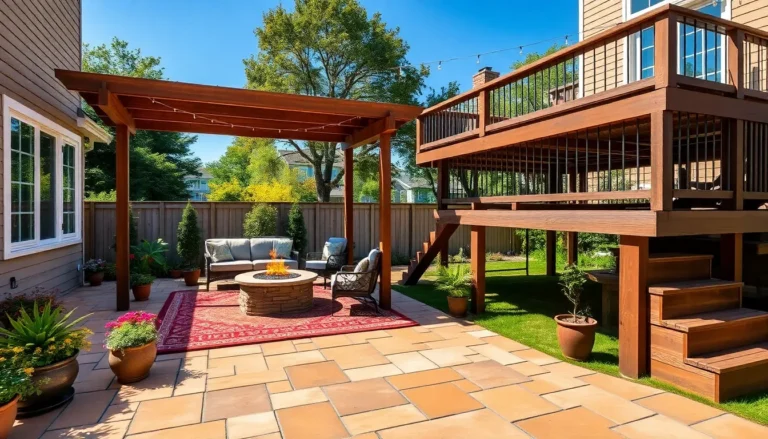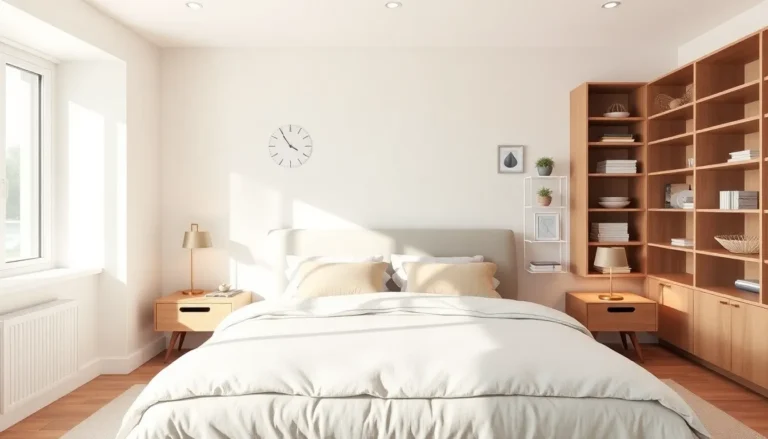Table of Contents
ToggleCreating a mandir at home isn’t just about aesthetics; it’s about crafting a sacred space that radiates peace and positivity. Imagine walking into a room where tranquility greets you like an old friend and divine vibes flow like a refreshing breeze. With the right mandir design, it’s possible to turn any corner of your home into a spiritual sanctuary that inspires devotion and serenity.
Importance Of Mandir Design For Home
Creating a mandir in a home serves multiple purposes that extend far beyond visual appeal. A well-designed mandir fosters an atmosphere of tranquility, enhancing the sense of peace within the living space. Divine energy flows through thoughtfully chosen materials and arrangements, transforming an ordinary area into a spiritual sanctuary.
Space allocation plays a crucial role in mandir design. Carefully selecting the location ensures easy access for prayer while maintaining privacy. Consideration of natural light can also elevate the ambiance, promoting a connection with the divine.
Aesthetic aspects, such as colors and symbols, significantly influence the energy of the mandir. Incorporating soothing hues, like soft white, warm beige, or calming blue, creates a serene environment. Attention to detail in carvings and decor can reflect personal beliefs and cultural values, deepening the spiritual experience.
Functionality cannot be overlooked. Essential elements like the altar, storage for religious texts, and offerings’ space should be part of the design. Practical features enhance usability and maintain the mandir’s purpose as a devotional area.
The overall design must harmonize with the home’s existing decor. Complementing surrounding furnishings ensures the mandir feels like an integral part of the home. Seeking inspiration from traditional and modern styles can foster a unique and personal touch.
Customizing spaces to reflect individual spirituality leads to a meaningful connection with the mandir. Each element should resonate with personal beliefs, encouraging daily rituals and meditation. Ultimately, the right mandir design elevates the living environment, promoting wellness and spiritual growth.
Popular Mandir Design Styles
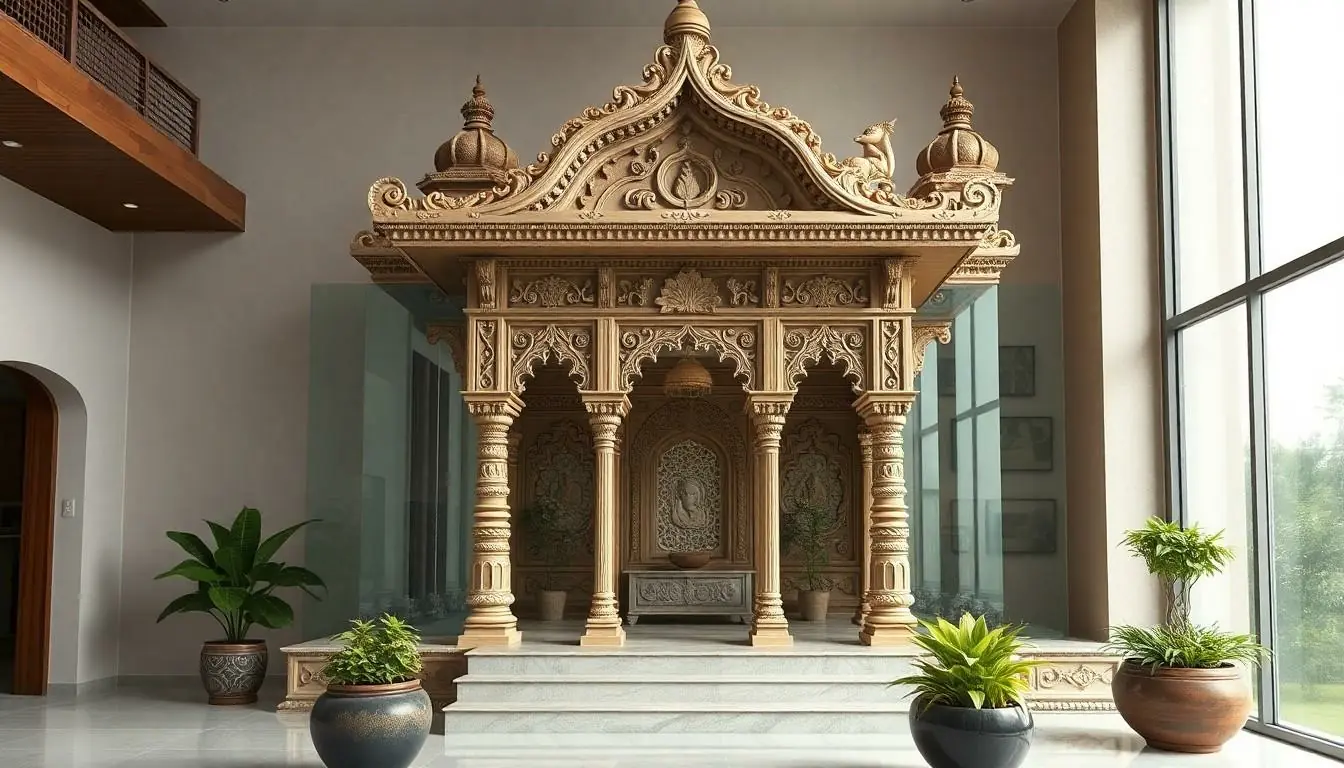
Various mandir design styles cater to aesthetic preferences and spiritual needs. These styles range from traditional to contemporary, each offering unique features and elements.
Traditional Mandir Designs
Traditional mandir designs often reflect rich cultural heritage. They incorporate intricate carvings, ornate pillars, and vibrant colors. These spaces typically feature materials like wood and stone, enhancing their timeless appeal. Curvy roofs characterize many traditional designs, providing an authentic architectural style. Additionally, traditional designs often include motifs and symbols that resonate with spirituality. The incorporation of traditional artwork enhances the overall ambience, creating a sacred atmosphere.
Contemporary Mandir Designs
Contemporary mandir designs focus on minimalism and functionality. These spaces utilize clean lines and open layouts, promoting a serene environment. Neutral color palettes dominate, allowing for a calming effect. Often, contemporary designs include innovative materials like glass and metal to achieve a modern look. Functional elements, such as built-in storage, make these mandirs user-friendly while maintaining spiritual significance. Modern Mandir designs also experiment with lighting, using natural light creatively to enhance the divine experience.
Key Elements Of A Home Mandir
Creating an inviting mandir space involves key elements that promote spirituality and tranquility.
Material Choices
Selecting the right materials is crucial for a home mandir. Wood, stone, and metal often feature prominently in traditional designs. Durable materials not only enhance aesthetics but also contribute to longevity. For contemporary spaces, glass offers an airy feel while maintaining a divine atmosphere. Craftsmanship matters; intricate carvings and detailed finishes can evoke a strong spiritual connection. Combining various materials can create unique textures and visual interest, deepening the space’s overall appeal.
Color Schemes
Choosing an appropriate color scheme sets the mood of the mandir. Soft, soothing colors like whites, light blues, and pastels enhance relaxation and peace. Bright hues can energize the environment but should be used sparingly to avoid overwhelming the senses. Earthy tones can ground the space and enhance the connection to spirituality. Incorporating symbols and motifs through color helps personalize the environment, making it more meaningful. Ultimately, colors should harmonize with the home’s existing decor, fostering a sense of unity.
Placement Considerations
Placement is vital for maximizing the mandir’s energy. Ideally, mandirs should face east or north to align with positive energy flow. Privacy matters; selecting a discreet location ensures a tranquil setting for prayer and meditation. Ample natural light enhances the space, while avoiding clutter maintains a serene atmosphere. Each mandir layout should consider accessibility, making it easy for family members to engage with the space. A well-chosen location fosters devotion and encourages regular use of the mandir.
Tips For Designing Your Home Mandir
Crafting a home mandir requires careful consideration to create a serene and inviting space. Focus on utilizing available areas efficiently and ensuring a personal touch that enhances spiritual connection.
Space Utilization
Allocate a dedicated area for the mandir that provides both accessibility and privacy. Smaller homes benefit from vertical designs or built-in features to maximize space. Position the mandir in a well-lit section, ideally receiving natural light, to create a peaceful atmosphere. Arrange essential items, including idols, puja materials, and religious texts, within easy reach. Avoid clutter around the mandir to maintain its sanctity. Incorporate elements such as shelves or drawers to store materials discreetly. Ensure the design complements the existing decor while offering a unique experience of spirituality.
Personalization Ideas
Infuse personal elements into the mandir design to reflect individual spirituality. Consider incorporating family heirlooms or artifacts that hold emotional significance. Utilize soft furnishings, like cushions or drapes, in calming colors for added comfort. Incorporate meaningful symbols or artwork that resonate with spiritual beliefs. Enhance the ambiance further by adding plants or natural elements that promote tranquility. Opt for customizable items, such as nameplates or decorative frames, to create a sense of ownership. Lighting plays a crucial role; include soft lighting options, like candles or fairy lights, to promote a warm environment.
Creating a mandir at home is a deeply personal journey that fosters a sense of peace and spirituality. With thoughtful design choices and attention to detail, anyone can transform a simple space into a sacred sanctuary. By blending aesthetics with functionality, the mandir can serve as a reflection of individual beliefs and values.
The right design not only enhances the home’s ambiance but also promotes wellness and spiritual growth. Whether opting for traditional or contemporary styles, incorporating personal touches and ensuring optimal placement can elevate the overall experience. Ultimately, a well-designed mandir becomes a cherished space that nurtures devotion and tranquility for all who enter.

